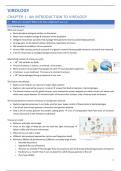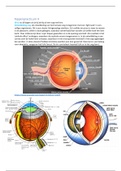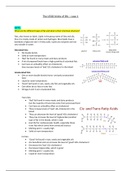Samenvatting
Summary virology
- Vak
- Virology
- Instelling
- Universiteit Antwerpen (UA)
This is a summary of all the virology classes (academic year ). The summary is written in English. Dit is een samenvatting van alle lessen virologie (academiejaar ). De samenvatting is geschreven in het Engels.
[Meer zien]





